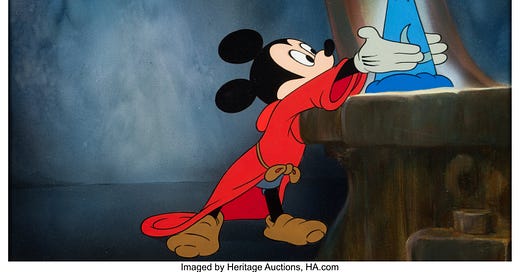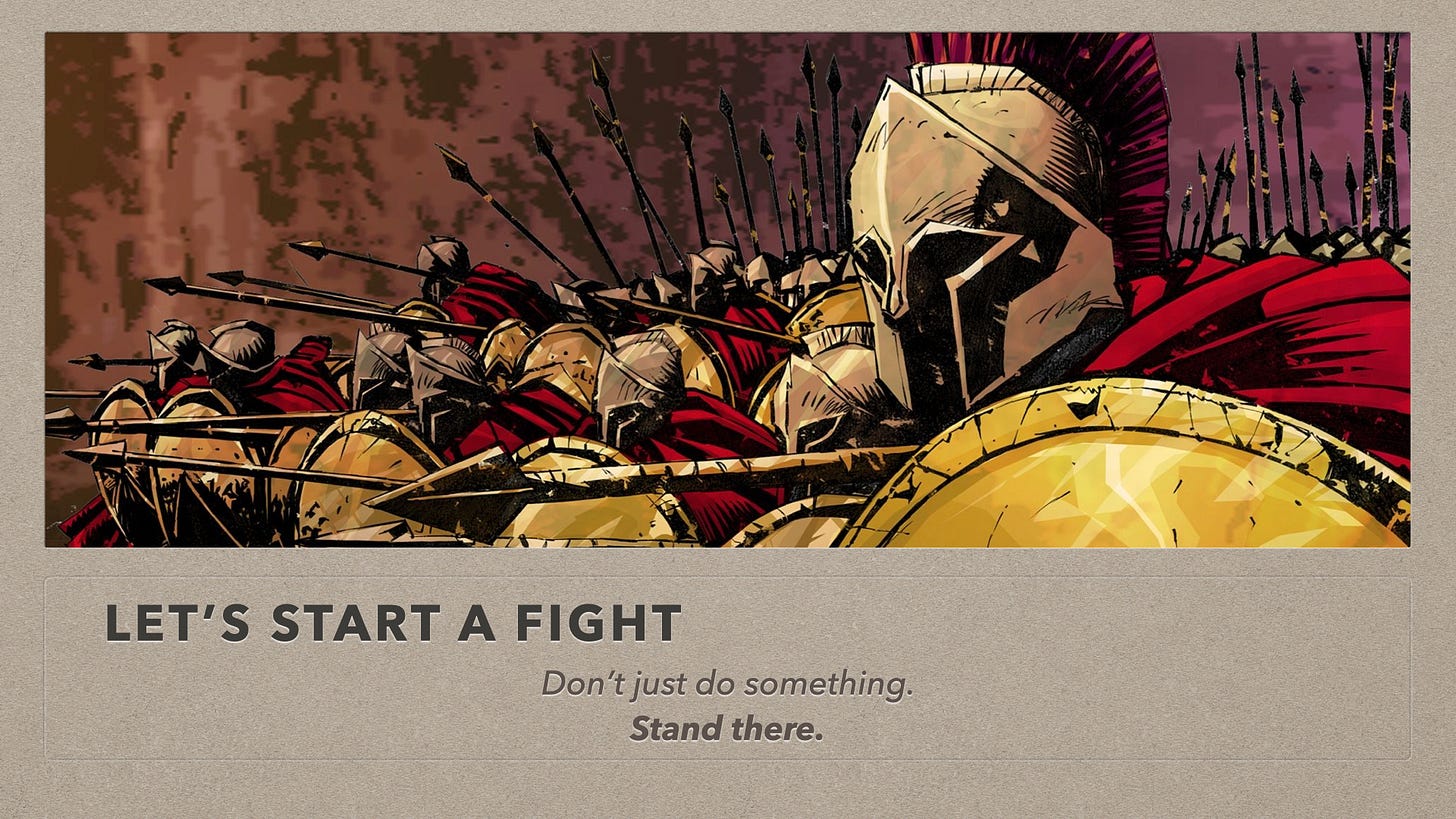This series is an adaptation of my 2024 AVCA presentation of the same name. I have posted the video and slides previously. You can find links to the presentation video, slides, and resources at the bottom of this post.
This is part 5 of the series. In this part, I’ll give a few more reasons why I think being a magician coach matters. You can find previous parts here:
In part 4, I discussed how magical coaching isn’t actually separate from classical and jazz coaching and what it takes to bring magic into your own coaching. I wrote that, in order to do anything magical in your coaching, you needed to reflect on your frames and bring them into the questions you ask. Now I want to emphasize a different aspect of magical coaching that I love, deliberately bringing yourself into your coaching. I think coaches often view themselves as unmoved movers, they believe they can pull strings and push buttons without their position being affected. I disagree with that view. Decisions coaches make and actions they take have real and important effects on how athletes relate to them, which ultimately has effects on how coaches can work with them going forward. I believe magician coaches acknowledge this fact and endeavor to be their most authentic selves in order to be the best coaches they can be. It doesn’t matter if they happen to be classical or jazz or some other kind of coach, they strive for authenticity while being that kind of coach. They improve their authenticity by reflecting not just on what they do, but by also reflecting on who they are when they coach. This kind of reflection leads to the formation of a stance.
Taking a Stand
At the outset of this series, I said I wanted to start a fight. Here’s the last part of that fight: to choose where you stand and to always coach from that place.
Being authentic in your coaching requires making some big choices about what you believe. I started to discuss this topic in part 4 of this series when I said coaches should bring their unstated premises into their questions about coaching. These premises are indications of your coaching values. The education professor Robert L. Fried wrote about the importance of your values this way:
“What we have going for us is a philosophy, an attitude, a bearing, a way of encountering learners based on a set of core values about kids and their potential. What we have is a stance.” (Fried 2001, p. 139)
He goes on to describe why having a stance matters:
“The value of having cultivated a stance is that it allows us to focus our energy, most of the time, on what we think learning is all about, on what's really important, instead of getting caught up in the details of the lesson plan or the formalities of classroom management.” (Fried 2001, p. 150)
Fried acknowledged that teachers (and coaches) get caught up in technical rationality, placing outsized importance on the moves one makes while teaching/coaching. I don’t think he’s saying the details don’t matter, I think he’s saying the decisions you make about planning and management are driven by something larger, which is your stance. The stance is more important than the details because your stance helps you decide how to manage the details.
Your stance says what you believe about yourself, the people in your care, competing, knowing, and learning. It’s simple to summarize what a stance is. But it takes plenty of reflection and attention to dig into what your stance is. But it’s worth it.
Having a stance makes your coaching more coherent and consistent, which makes you more trustworthy and transparent. Decisions become more clear to you when you make them in accordance with your defined values. When you act in accordance with your stance, you’ll have a much easier time talking with others about your decisions.
Another great advantage possessed by magician coaches because of their stance is their ability to work seamlessly within their environment. Their stance keeps them centered and focused as practices and competitions unfold around and with them. While they use their stance to plan and prepare, they also use their stance to adapt and improvise when necessary. What makes their improvisation great is the structure that underpins it, their stance. Because they know what is most important to them in any given practice or competition, they can quickly find new ways to keep progressing towards their goals and aspirations when things unfold unexpectedly. The structure a magician coach creates with their stance is practically invisible to everyone else so watching them is like watching magic happen. The magic isn’t in running a tight practice, where everything is choreographed and rehearsed, though that can be mesmerizing. The magic is in the authenticity. When you are your best self, you inspire others around you to be their best selves too. That comes through in your coaching and people in and around your coaching can sense it.
Everything I’ve written in this series has been to bring you to this realization, that investing in your stance may be the most important work you do as a coach. This series has been a long endeavor to show you how to take the “outer” work you do as a coach (like what makes you a classical or jazz coach) and learn what that work says about what you believe. That’s how you start doing the inner work that separates great coaches from merely good ones, you reflect on what you do in order to learn lessons about who you are. That’s where the magic happens.
Music and Magic
Here are my video and my slides from “Music and Magic”. I edited out the discussion times but the content is all there. While I think there’s value in watching the video and looking at the slides, I think that the magic here is in the thoughts and the conversations you can share with others to facilitate your reflection.
Music and Magic : Resources
Here’s the page with the video and slides for the presentation itself. Below that are notes and references for the presentation.











